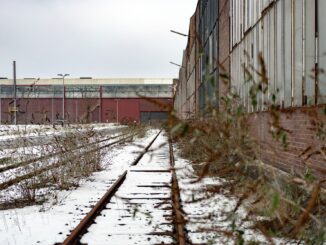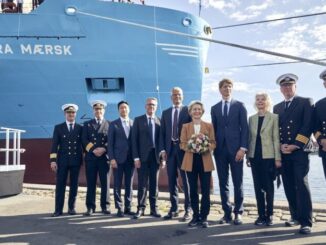
Global gas prices are expected to remain volatile, even though Europe is better positioned heading into winter this year, said industry executives at a conference on Tuesday.
Global gas prices leapt to all-time highs last year after Russia cut its gas supply to Europe, leading the bloc to import record amounts of liquefied natural gas (LNG) and causing Asian spot prices to hit historic highs.
Michael Lewis, CEO of German utility Uniper, said that while Europe’s natural gas market was much better positioned this year thanks to reduced industrial demand and higher storage levels, European gas prices remained subject to volatility.
“The most important thing is the storage position, it is much better this year, we already hit the 90% target,” Lewis said in an interview on the sidelines of the Gastech conference in Singapore on Tuesday.
“We have all of the right factors in place, but the price is very sensitive… The price elasticity has changed. It is volatile, and the situation is potentially fragile,” he said.
“Temperature is the key factor that will cause probably a very significant price swing, but I think we will be able to cope with it,” Lewis said.
Meanwhile, a senior executive at Chevron said on Tuesday that the global LNG spot market is expected to stay volatile until 2025, and even a normal winter in Europe could be difficult as far as gas supplies are concerned.
“As we go into this winter, if it’s a normal winter, it could be a very difficult time for some of the Europeans like Germany and other countries,” said Freeman Shaheen, Chevron’s head of global gas business.
Winter LNG prices that are expensive relative to coal could deter some buyers in Asia, said Russell Hardy, chief executive of Vitol, the world’s largest independent oil trader.
“You’re going to continue to see in Pakistan, to some extent India, some extent China… they’ll make choices not to take in LNG at these prices, and they’ll use other fuels,” he said.
“There isn’t quite enough LNG to go around still, and if any of the possible negative side events of weather or supply disruptions do occur this winter, the volatility will return.”
M.L. Peekthong Thongyai, senior vice president for the gas business unit at Thailand’s PTT, expects LNG prices to edge up this winter but added that “the slowdown in China this year has kind of kept prices from going berserk”.
“It should be okay this year,” he said.
RISING DEMAND
Over the longer term, Uniper’s Lewis said the next two to three years would be challenging as European demand begins to rise, fuelled by more gas-fired power generation coming online, although ramped up LNG capacity expected from the United States and Qatar between 2026 and 2028 should boost supply by about 20%.
Germany needs “probably” 25-30 gigawatts of new gas-fired power capacity over the next seven to eight years, he said.
“If you look at the long, long term, we do see European LNG demand peaking in the mid-2030s and then it should start to decline in line with overall decarbonisation targets of Europe,” he said.
“But there is very much an uncertainty in how quickly that will happen,” he said.
Chevron’s Shaheen also said that Europe will continue to need gas to manage the intermittency of renewable energy, and that Chevron still believes in a recovery in Chinese demand.
“I think we’re all expecting them to wake up, and when they wake up, it will be quite rapid. It just hasn’t happened at that scale. China and their growth typically will attract all commodities… I still believe in the long term prospects.”
China was the world’s top LNG importer in 2021, shipping in nearly 79 million metric tons of the fuel. But stringent COVID measures curbed demand last year, and an economic slowdown this year continues to limit its appetite.



